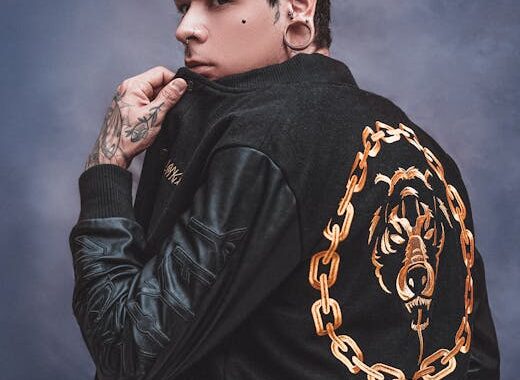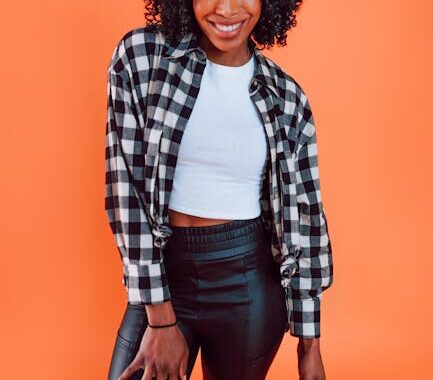A Journey Through Time: Exploring the Elegance of Korean Old Hairstyles
Korean old hairstyles represent a rich tapestry of cultural significance, evolving alongside societal changes and reflecting the aesthetics of each era. From the elaborate updos of royalty to the more practical styles of the common people, these hairstyles offer a fascinating glimpse into Korea’s past. This article delves into the history and artistry behind these captivating looks, examining the techniques, symbolism, and social implications of Korean old hairstyles.
The Joseon Dynasty: A Golden Age of Hairstyle Complexity
The Joseon Dynasty (1392-1897), a period of significant cultural development in Korea, witnessed the flourishing of elaborate and intricate hairstyles. These styles, particularly those worn by the upper classes, were often incredibly time-consuming to create, requiring the assistance of skilled hairdressers. The use of hairpins, decorative ornaments, and elaborate braids signified social status and marital status. For instance, the gagori, a type of large, ornate hairpin, was frequently seen in depictions of noblewomen. Different styles also indicated age and position within the family. The intricate buns and elaborate chignons were not merely decorative; they were powerful visual statements of social hierarchy.
Key Hairstyles of the Joseon Dynasty:
- Gacheoreon: A type of elaborate bun often adorned with decorative pins and ribbons.
- Jueon: A more simplistic bun, often worn by women of lower social standing.
- Dwi-gae-chaek: A style featuring two side buns, signifying youth and unmarried status.
Understanding the nuances of these Joseon-era Korean old hairstyles requires considering the intricate social codes that governed their usage. [See also: The Significance of Hair Ornaments in Joseon Dynasty Hairstyles]
Beyond the Joseon Dynasty: Hairstyles of Earlier and Later Eras
While the Joseon Dynasty is often associated with the most visually striking Korean old hairstyles, the styles of earlier periods also hold considerable historical importance. Before the Joseon era, styles were often simpler, influenced by neighboring cultures. The styles reflected a more practical approach to daily life. However, as Korean culture developed, so did the complexity of its hairstyles.
After the Joseon Dynasty, the advent of Western influence brought about significant changes. Traditional Korean old hairstyles gradually gave way to more modern styles, but elements of the older traditions persisted in some forms. The adoption of Western styles was not a complete rejection of Korean heritage, but rather a process of adaptation and integration.
Evolutionary Trends:
- Pre-Joseon: Simpler, often loose styles with less emphasis on elaborate ornamentation.
- Joseon Dynasty: Highly developed and intricate hairstyles reflecting social hierarchy and marital status.
- Post-Joseon: Gradual integration of Western styles while retaining some aspects of traditional techniques.
The Techniques and Materials Behind the Styles
The creation of these intricate Korean old hairstyles involved considerable skill and expertise. Specialized tools like combs, hairpins, and ribbons were used to achieve the desired effects. Hair extensions were also frequently employed to add volume and length. The materials used for decoration varied depending on the social status of the wearer, ranging from simple wooden pins to ornate gold and jade accessories.
The process itself was often lengthy and demanding, sometimes requiring hours of careful work. Specialized hairdressers, often women themselves, played an important role in maintaining these styles, reflecting the social importance placed on hair and appearance.
The Symbolism and Social Implications of Korean Old Hairstyles
Korean old hairstyles were far more than just aesthetic choices; they held significant social and symbolic meaning. As mentioned earlier, the style a person wore conveyed information about their social status, marital status, age, and even their family background. The elaborate hairstyles of the upper classes served as a visual marker of their privileged position within society. Changes in hairstyle could also indicate significant life events, such as marriage or the onset of adulthood.
The use of specific hairpins and ornaments further enhanced the symbolic meaning of the hairstyle. Certain materials and designs held specific cultural or religious connotations, adding layers of meaning to the overall look. The meticulous attention to detail in Korean old hairstyles demonstrates the deep cultural significance placed upon them.
Modern Interpretations and Revivals
In recent years, there has been a growing interest in reviving traditional Korean old hairstyles. Modern stylists are drawing inspiration from historical images and descriptions to recreate these intricate looks, adapting them for contemporary tastes. This revival is part of a broader trend toward celebrating Korean cultural heritage and re-evaluating traditional practices.
However, the challenges of recreating these complex styles remain. The techniques involved often require extensive training and practice. Furthermore, the availability of traditional materials and tools can sometimes be limited. Despite these hurdles, the continued interest in Korean old hairstyles signifies their lasting appeal and cultural significance.
Preserving the Legacy of Korean Old Hairstyles
The preservation of knowledge and techniques related to Korean old hairstyles is crucial for understanding Korea’s rich cultural heritage. Efforts to document and archive historical information, including images, descriptions, and techniques, are vital for future generations. Through museums, historical archives, and ongoing research, we can work to safeguard this important aspect of Korean history and culture.
The study of Korean old hairstyles offers a unique window into the past, revealing insights into social structures, aesthetic preferences, and the cultural values of past generations. By understanding and appreciating the artistry and symbolism of these styles, we can deepen our understanding of Korean history and culture. [See also: The Evolution of Korean Beauty Standards]
In conclusion, Korean old hairstyles are far more than simply decorative elements; they’re intricate expressions of cultural identity, social hierarchy, and artistic skill. Their evolution provides a captivating narrative that continues to inspire and fascinate, reminding us of the enduring legacy of Korean history and tradition.


